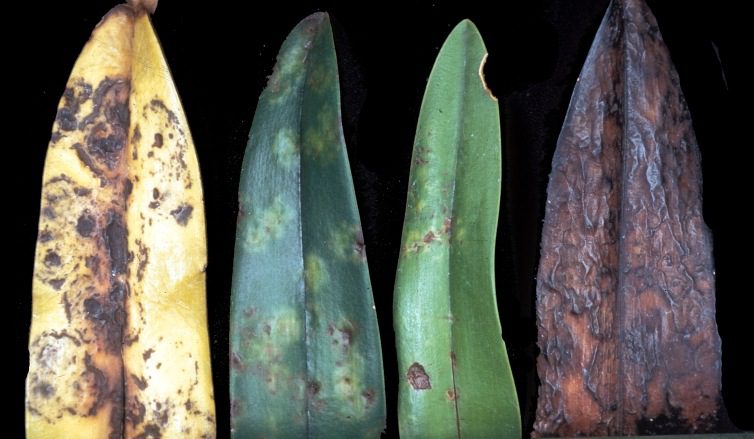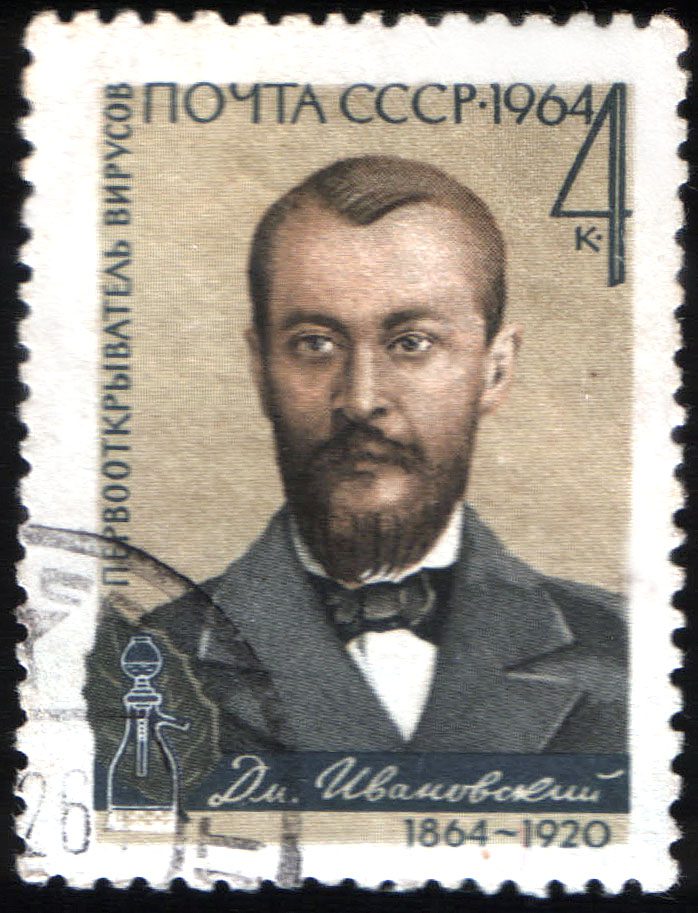Biography
Dmitri Iosifovich Ivanovsky (1864 – 1920, Fig. 1) was a Russian botanist and one of the first scientists to take the first steps in the study of virology.
Ivanovsky was born in Gdov, a town on the shores of Lake Peipus, whose waters divide Western Russia from Estonia. He came from a large family of modest social status. He attended Gymnasium High School brilliantly then, after his father’s death, the family moved to Saint Petersburg. In August 1883 he enrolled in the university, choosing the faculty of Natural Sciences.

They were years of great ferment for scientific activity in the Russian Empire. Teachers of the time included the likes of Ivan Mikhailovich Sečenov and Dmitry Ivanovich Mendeleev. His main mentor was Andrei Faminstyn, one of the leading plant physiologists of the time. Brilliant and appreciated student, Ivanovsky soon became an instructor in the laboratory of physiology and anatomy of plants. Since 1887 he studied a particular disease that affected tobacco plants (Fig. 2) and became the subject of his doctoral thesis, successfully discussed in Kyiv in 1901.

He obtained a chair at the University of Warsaw, where he continued his studies of botany, together with another clever and well-trained scholar: Michael Tsvett. Ivanovsky’s career continued with some difficulty, due to the frequent lack of funds. He married the daughter of a political refugee and had a son, who died very young. Also marked by the upheavals of the First World War, during the Great Russian Retreat in 1915 he had to leave Warsaw to move to Rostov, where he ended his career and died in 1920, at the age of 55.
Scientific contribution
Ivanovsky was an active scholar in several fields, although he paid particular attention to botany. He carried out studies on alcoholic fermentation, discovering the importance of substances containing nitrogen in this process and that, to different strains of yeast, corresponds to a different type of fermentation. During the Warsaw years, together with Tsvett, he investigated the effects of sunlight on the pigment in plants and their role in photosynthesis. He became better known for his research on Tobacco Disease (Fig.3), which led him to conclude that the cause was a particular pathogen, smaller than the usual bacteria, although he could never prove it directly.

Focus: Tobacco mosaic disease
In 1887, while Ivanovsky was still a student, Famynstin and Dean Beketov commissioned him to investigate a tobacco plant disease that was affecting some areas in Ukraine and Bessarabia, a region that includes territories of Ukraine and Moldova, to the shores of the Black Sea. Adolf Mayer, a Dutch scientist, first studied and described this pathology that led to the formation of spots. Ivanovsky carefully described the appearance of the plants but was never able to isolate the pathogen responsible, which is why the conclusions of his doctoral dissertation led to arrive.
Now as an expert, they recalled him for the same reason three years later, this time in Crimea. It was at this point that Ivanovsky realized that this disease was caused by a particular etiological agent; an “elusive” bacterium that managed to escape even a sophisticated filtration system recently diffused: the Chamberland filter. He spoke in his writings of “contagium fixum”, meaning the presence of a microbe that he could not identify, as evidenced by his journals where he wrote of “necessary future investigations”. It was only later that Martinus Beijerinck, accepting instead the theory of “contagium vivum fluidum”, realized the existence of something smaller than a bacterium, which took the name of virus.
Awards
Ivanovsky was particularly esteemed as a teacher in his career, both for his liberal ideas and for his didactic approach, made of debates. He did not travel much in his life and this prevented him from being known by colleagues working further west; however, he was able to write in German, so he was able to spread his discoveries throughout Europe. Beijerinck credited him for his findings on tobacco disease. A stamp (Fig.4) was dedicated to him.

Original article by: Davide Ghisi – Translated by Luigi Gallucci
Bibliography
- https://mmbr.asm.org/content/mmbr/36/2/135.full.pdf
- https://www.britannica.com/biography/Dmitry-Ivanovsk
- Featured image: wikimedia.org